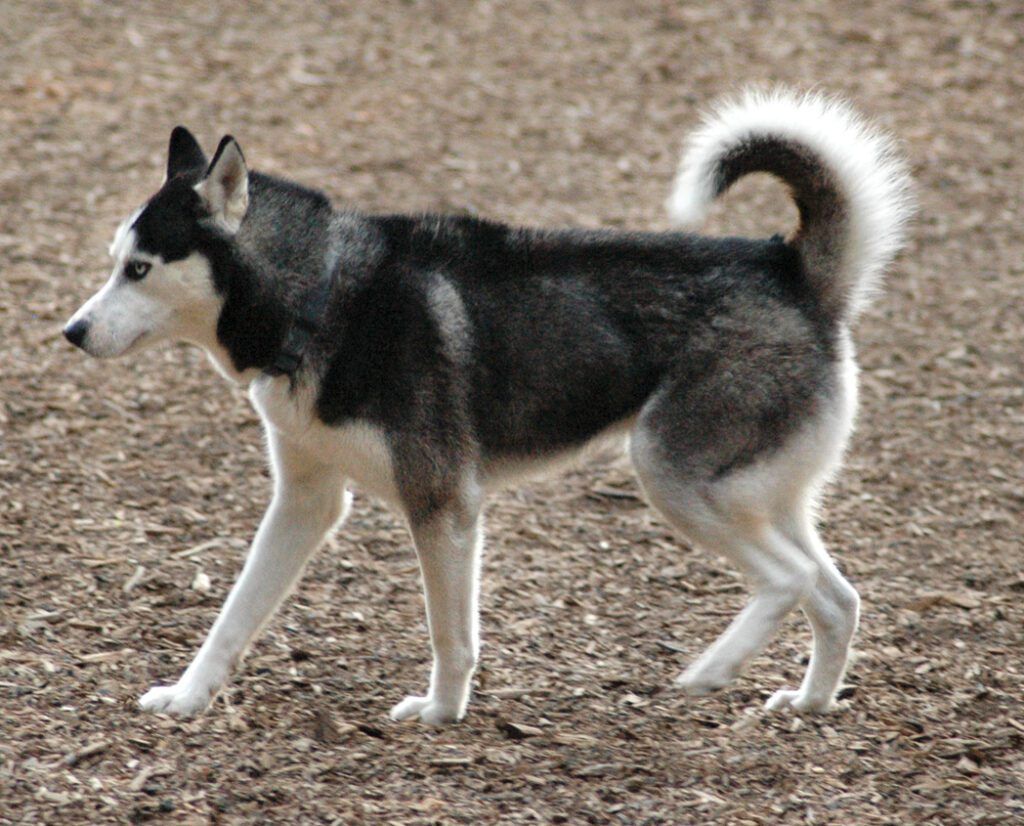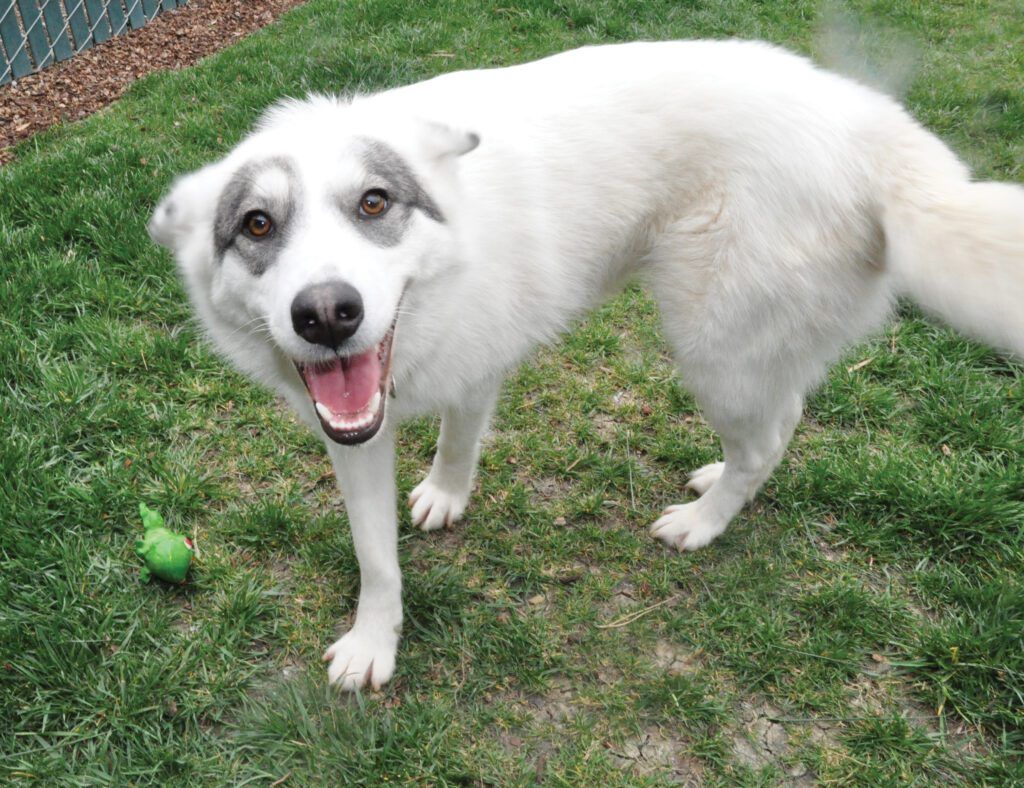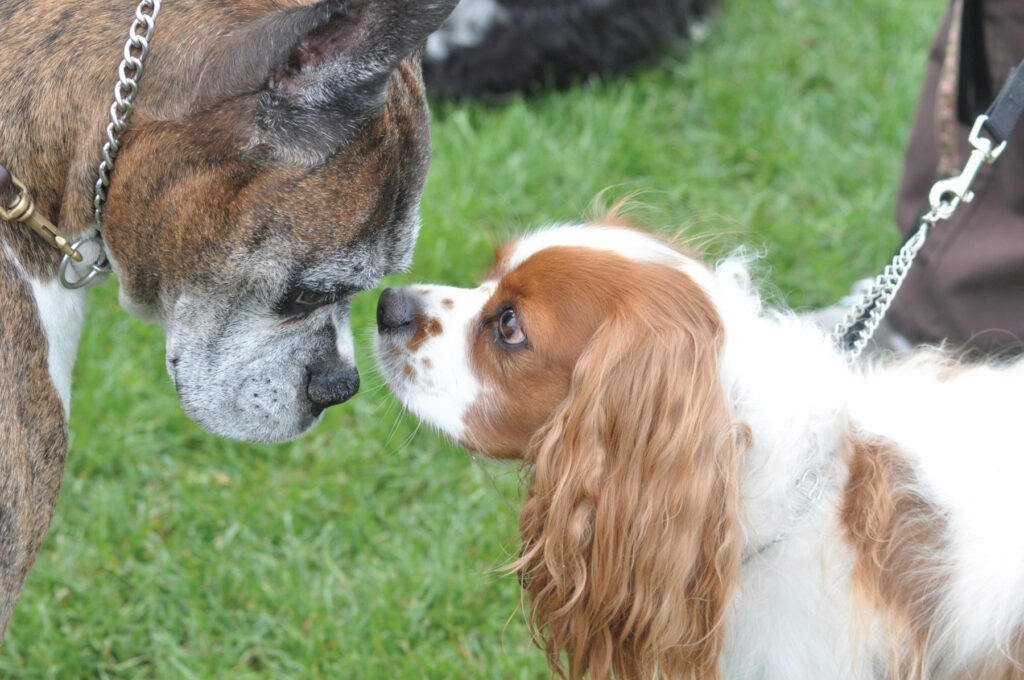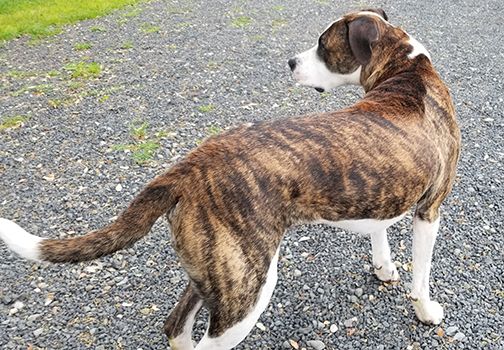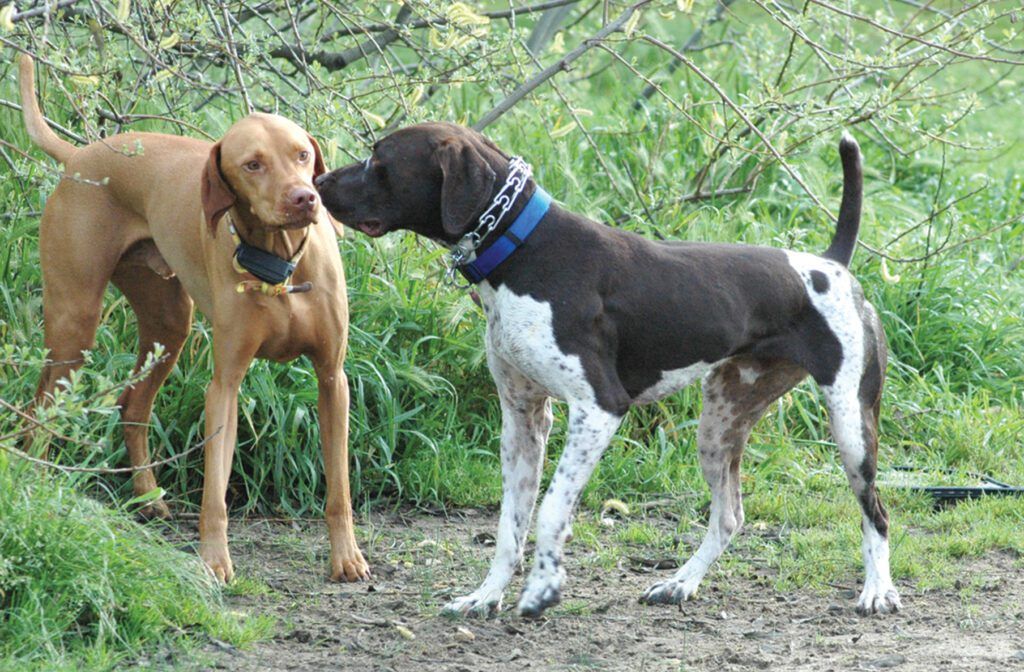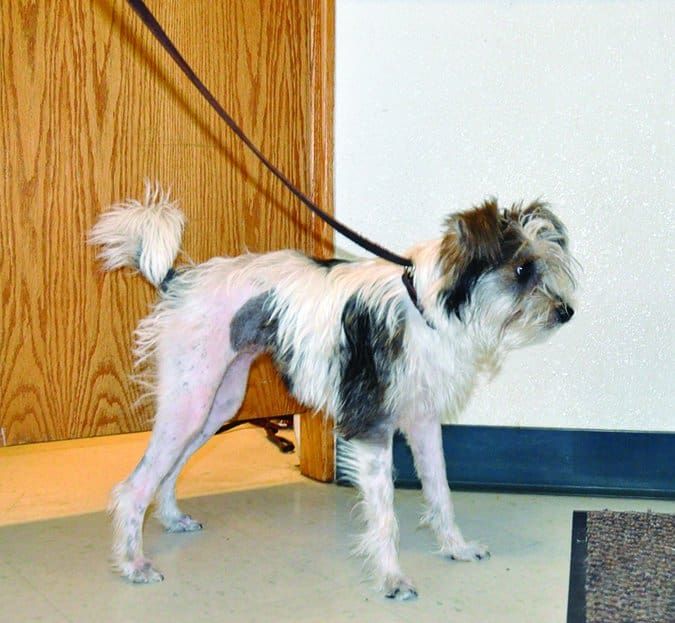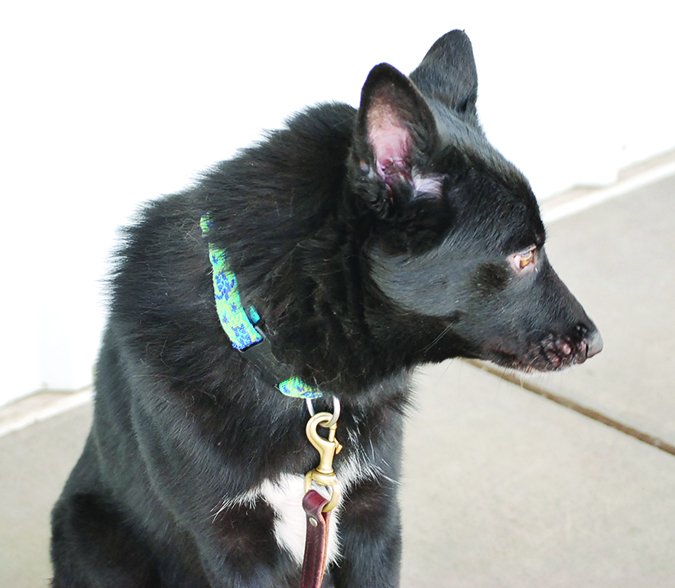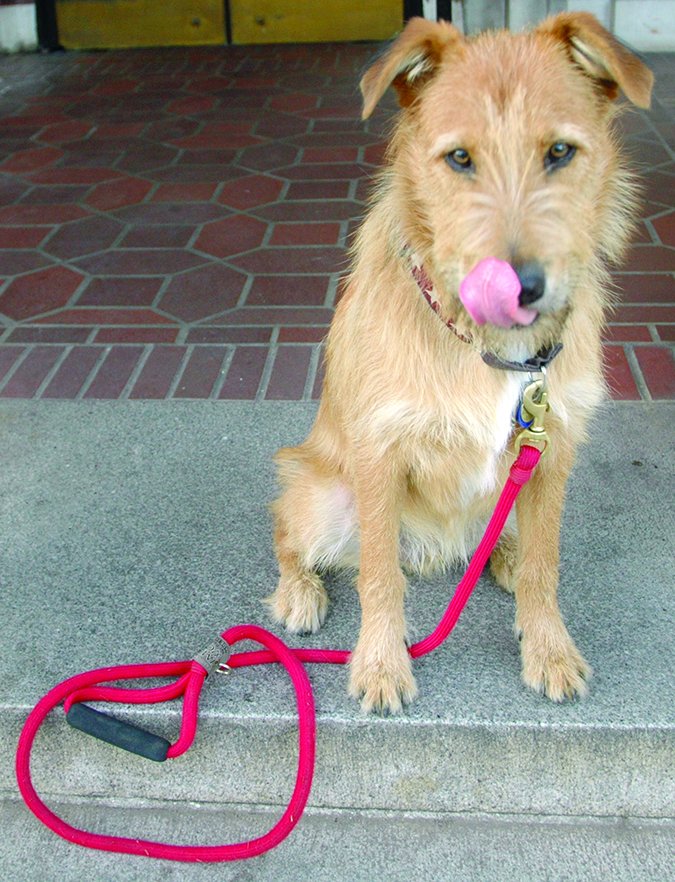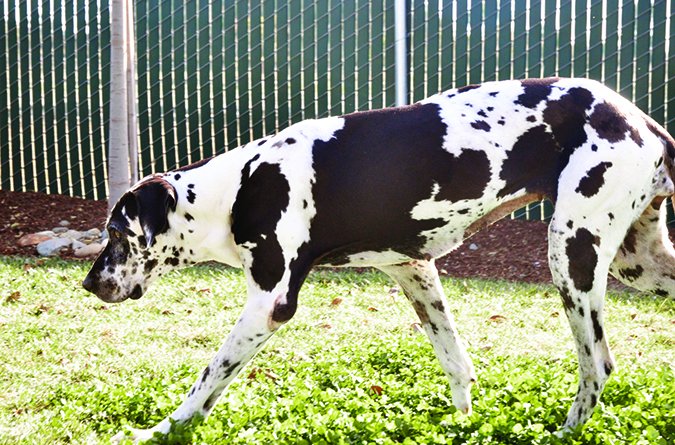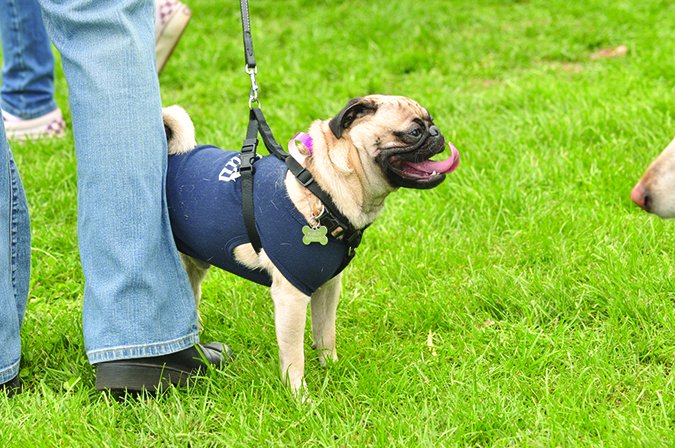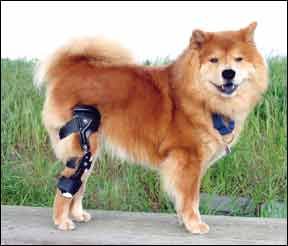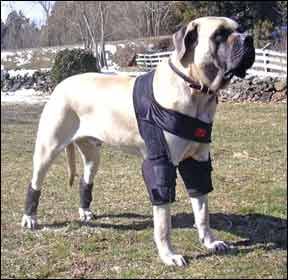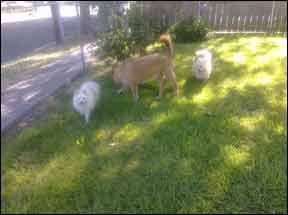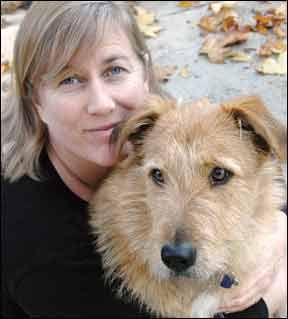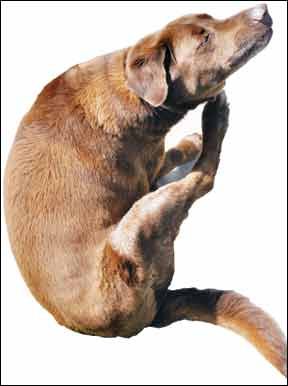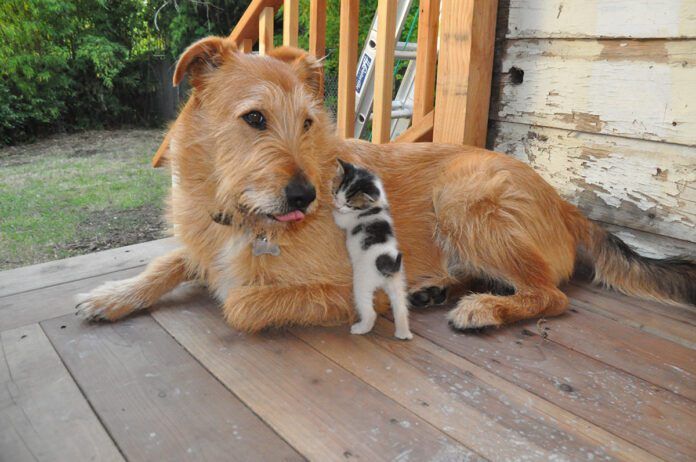There are generally six types of sounds that dogs use in order to vocally communicate with humans or with other canines. Most noises dogs make indicate some form of frustration, like when a dog whines to go outside. But dogs will also vocalize pleasure – and happy dog noises don’t always sound too friendly! Here’s a rundown of what dog sounds might mean:
1. Barking
Why do dogs bark? Dogs bark for many reasons, including alert (there’s something out there!), alarm (there’s something bad out there) boredom, demand, fear, suspicion, distress, and pleasure (play). If you know how to tell between different kinds of dog barks, you can easily understand why your dog is so vocal in the first place! Believe it or not, dogs’ vocal communication methods aren’t just for annoying neighbors – they’re for telling you something important has happened!
The bark of a distressed dog, such as a dog who suffers from isolation or separation distress or anxiety, is high-pitched and repetitive; getting higher in pitch as the dog becomes more upset. Boredom barking tends to be more of a repetitive monotone. Alert bark is likely to be a sharp, staccato sound; alarm barking adds a note of intensity to the alert.
Demand barks are sharp and persistent, and directed at the human who could/should ostensibly provide whatever the dog demands. At least, the dog thinks so. Suspicious barks are usually low in tone, and slow, while fearful barking is often low but faster. Play barking just sounds . . . playful. If you have any doubt – look to see what the dog is doing. If he’s playing, it’s probably play barking.
2. Baying
Baying is deep-throated, prolonged barking, most often heard when a dog is in pursuit of prey, but also sometimes offered by a dog who is challenging an intruder. The scent hounds are notorious for their melodic baying voices. Some people interpret dog baying a long moaning sound.
3. Growling
Growls are most often a warning that serious aggression may ensue if you persist in whatever you’re doing, or what-ever is going on around him. Rather than taking offense at your dog’s growl, heed his warning, and figure out how to make him more comfortable with the situation.
If instead of a hostile growl, your dog is grumbling lowly, he may be perfectly happy! Dogs also growl in play. It’s common for a dog to growl while playing tug – and that’s perfectly appropriate as long as the rest of his body language says he’s playing. If there’s any doubt in your mind, take a break from play to let him calm down. Some dogs also growl in pleasure. Rottweilers are notorious for “grumbling” when being petted and playing, and absent any signs of stress, this is interpreted as a “feels good” happy dog noise.
4. Howling
Howling is often triggered by a high-pitched sound; many dogs howl at the sound of fire and police sirens. (Two of my own dogs howl when our donkey brays). Some dog owners have taught their dogs to howl on cue, such as the owner howling.
Howling is generally considered to be communication between pack members: perhaps to locate another pack member, or to call the pack for hunting. Some dogs howl when they are significantly distressed – again, a common symptom of isolation and separation distress.

5. Whimpering Sounds/Yelping
A whimper or a yelp is often an indication that a dog is in pain. This may happen when dogs play, if one dog bites the other dog too hard. The whimper or yelp is used to communicate the dog’s distress to a pack member (or human) when they are friendly. The other dog or human is expected to react positively to the communication. Whimpers can also indicate strong excitement such as when an owner returns at the end of a long workday. Excitement whimpering is often accompanied by licking, jumping, and barking. Dog whimpering is softer and less intense than whining. Puppy crying sounds are just little whimpers.
6. Whining
Dog whining sounds are high-pitched vocalizations, often produced nasally with the mouth closed. A dog may whine when it wants something, needs or wants to go outside, feels frustrated by leash restraint, is separated from a valued companion (human or otherwise), or just wants attention. It is usually an indication of some increased level of stress for the dog. Most often the dog crying sound is an exaggerated whine or whimper.
Speaking Words?
Some dogs are capable of replicating human speech sounds. When these sounds are selectively reinforced, dogs can appear to be speaking human words, sometimes even sentences. It is most likely that the dogs have no concept of the meaning behind the words they are “speaking” – although as we learn more about canine cognition, one can’t ever be too sure.
It’s interesting to note that one of the phrases most frequently taught to dogs by their owners is some version of, “I love you…” Youtube provides some entertaining footage of talking dogs, like this one.


